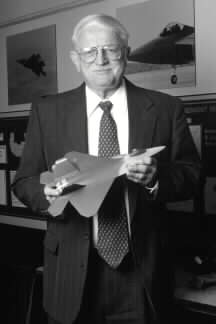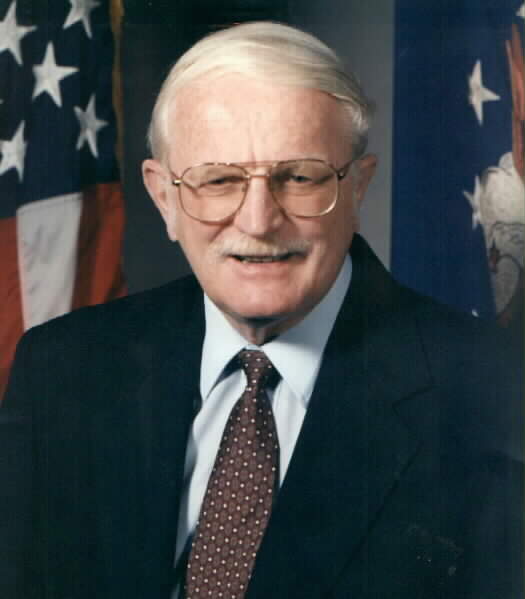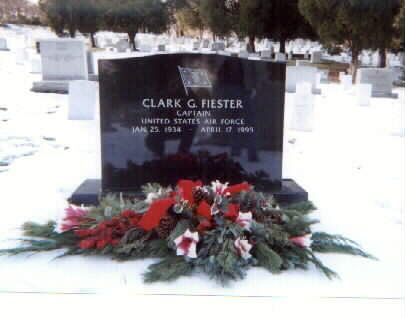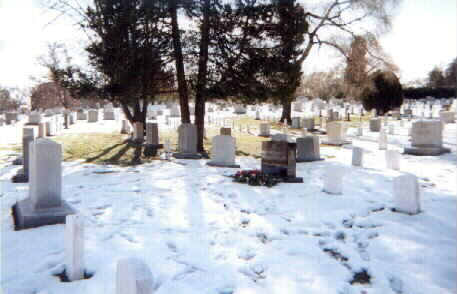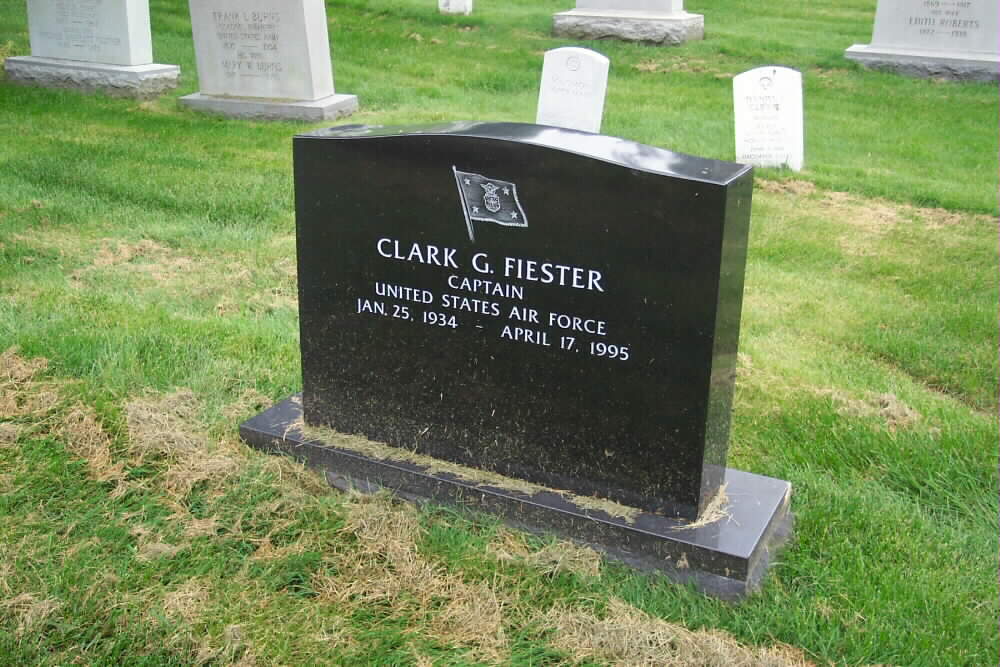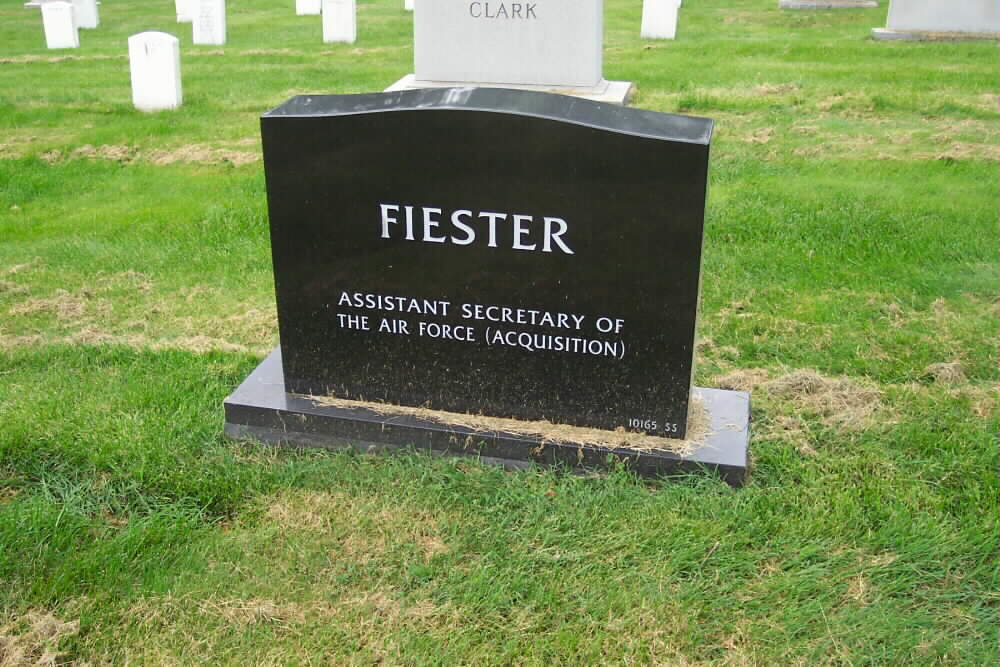Courtesy of the United States Air Force
Eight people were killed when an Air Force C-21 Learjet crashed into a wooded area near Alexander City, Alabama, about 6:30 p.m. CST April 17, 1995.
The aircraft, assigned to the 332nd Airlift Flight, Randolph Air Force Base, Texas, was flying from Andrews Air Force Base, Maryland, to Randolph, but was diverting to Alexander City Airport, Ala. — 35 miles northeast of Maxwell Air Force Base, Alabama – after experiencing an in-flight emergency.
Among the dead were Clark G. Fiester, Assistant Secretary of the Air Force for acquisition, and his military assistant, Colonel Jack Clark II; Major General Glenn A Profitt II, director of plans and operations, Air Education and Training Command, Randolph Air Force Base, Texas; Major Hubert B. Fisher, who was assigned to the Pentagon; Captain Paul Carey, instructor pilot; and First Lieutenant Paul M. Bowers, aircraft commander.
Also killed were retired Air Force Major James K. Horne; and a U.S. Army sergeant, both space available passengers. Army officials have not released the soldier’s name pending notification of next of kin.
Fiester and his official party were on their way to Brooks Air Force Base, Texas, to present an acquisition reform briefing to personnel at the Human Systems Center.
“We are deeply saddened by the loss of the eight people who perished in the C-21 accident in Alabama,” said Secretary of the Air Force Sheila E. Widnall and Gen. Ronald R. Fogleman, Air Force chief of staff, in a joint statement. “Two of the Air Force’s senior leaders were aboard the plane — Clark G. Fiester and Major General Glenn A. Profitt II — and we are grateful for their contributions to our nation and those of the other passengers and crew aboard the aircraft.”
As assistant secretary for acquisition, Fiester was responsible for Air Force research, development and acquisition activities. An experienced manager of electronic defense system organization, he had 38 years’ experience in design and development of advanced intelligence, electronic countermeasures and imagery systems. He is survived by his wife, Christine, and their two children.
Profitt, a command pilot with more than 6,000 flying hours, began his Air Force career in 1965. He was responsible for developing and implementing operational plans, programs and policies for AETC undergraduate flying training, EURO-NATO Joint Jet Pilot Training, survival training and combat crew training for fighters, airlift, tankers, and special operations crews.
Secretary of Defense William Perry, a close personal friend of Fiester and also a Penn State University alumnus, expressed his personal condolences to the families of those killed in the crash.
The C-21 has been in the Air Force inventory since 1984 and there are currently 80 aircraft in the fleet. The only other Air Force C-21 crash occurred in January 1987, also near Maxwell.
The last Air Force general officer killed in an aircraft accident was Major General Winfield S. Harpe, 16th Air Force commander, who died in an F-16 near Torrejon Air Base, Spain, in December 1988.
An Air Force board has been appointed to investigate the cause of the crash.
PRESIDENT’S STATEMENT ON THE C-21 PLANE CRASH
April 18, 1995
President Clinton stated today that he and Mrs. Clinton were “very saddened” to learn of the crash of an Air Force C-21 aircraft near Alexander City, Alabama last night, with the loss of eight lives. “Our hearts and our prayers go out to the families and friends of those who were killed,” he said.
The Secretary was granted a Presidential waiver for burial in Arlington National Cemetery.
Techanical problems, an inadequate flight manual and human error caused the crash of an Air Force C-21A aircraft in Alexander City, Alabama, April 17, according to an accident investigation report. Officials at 19th Air Force, Randolph Air Force Base, Texas, released the report July 19, 1995.
Eight people died in the crash. The C-21A Learjet took off from Andrews AFB, Md., and was en route to Randolph when a fuel imbalance problem forced the aircrew to divert the flight to Maxwell Air Force Base, Alabama. Accident investigators said a faulty electrical relay caused the C-21’s right standby fuel pump to continue pumping fuel after the aircraft was started. The malfunction forced fuel into the left wing, but prevented fuel from being transferred into the right wing. The aircrew could not correct the problem since Air Force had not included procedures for this type of fuel imbalance in its C-21 training syllabus or flight manuals, although the information was available in civilian C-21 flight instructions and checklists, the report stated. When the crew tried to land the C-21 at Maxwell, they made “control inputs that caused the aircraft to enter a flight regime from which they could not recover.” Since the accident, Air Force has added procedures to training courses and flight manuals to correct the fuel imbalance problem, said Air Force officials. Killed in the crash were Clark G. Fiester, Assistant Secretary of the Air Force for acquisition, and Major General Glenn A. Profitt II, director of plans and operations at Air Education and Training Command, Randolph. Also killed were Colonel Jack Clark II, military assistant to Fiester; Major Hubert B. Fisher, who was assigned to the Pentagon; Captain Paul Carey, instructor pilot; First Lieutenant Paul M. Bowers, aircraft commander; retired Air Force Major James K. Horne of San Antonio; and Army Sergeant Pedro Sanchez Mercado from the Defense Information Systems Agency, Arlington, Virginia.
Nancy wrote: “I couldn’t help but share these photos with you.
“As we both know and appreciate…
“Arlington National Cemetery is so much more than just a final resting place for those human beings who once lived and breathed alongside the rest of us.
“Arlington is a place of beauty, a place of honor, a place of dignity, a place of respect, a place that embraces love, a place that quietly commands a sense of gratefulness coupled with admiration, a place where the magnitude of sacrifice is unsurpassed by any means,with the exception of the sacrifice made by Almighty God in the sacrifice of His Own Son to promise eternal rest to those of us who believe in Him, and ultimately…Arlington should give all of us a reason to appreciate every single day as a present.
“Yesterday is history,
Tomorrow is a mystery,
Today is a gift,
That is why it is called the Present.
“Arlington becomes even more sacred, and more beautiful, under a warm blanket of Winter snow:)
“Thanks once AGAIN for giving me a virtual path to visiting my dad!
“Happy New Year to you and yours and May God Bless You:)
Much love from here to there, Nancy Anne Fiester”
Michael Robert Patterson was born in Arlington and is the son of a former officer of the US Army. So it was no wonder that sooner or later his interests drew him to American history and especially to American military history. Many of his articles can be found on renowned portals like the New York Times, Washingtonpost or Wikipedia.
Reviewed by: Michael Howard

